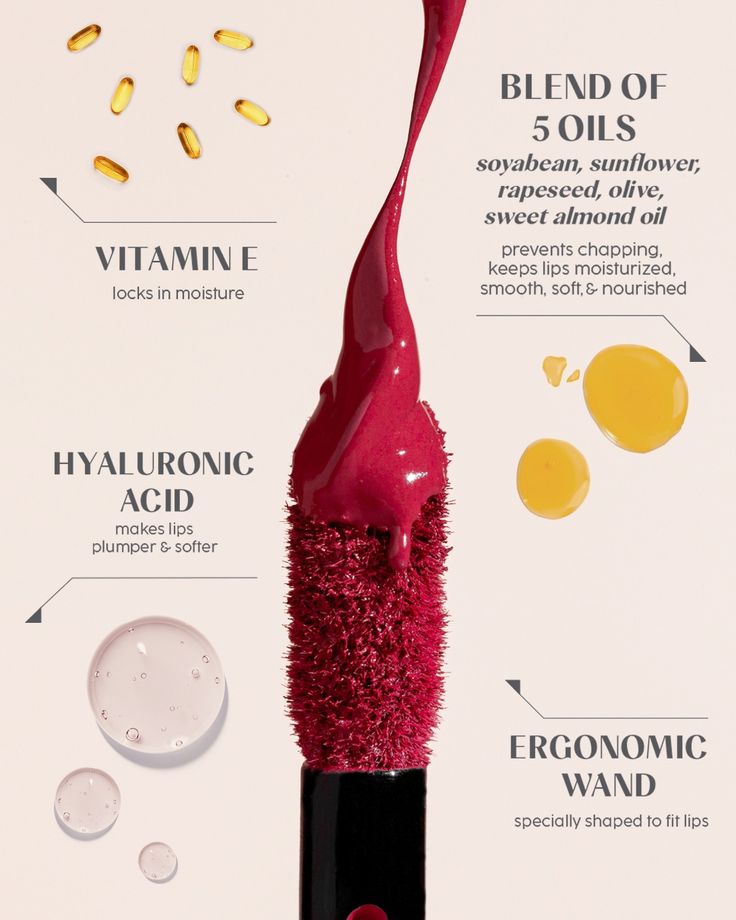Lipstick formulations can vary widely depending on the brand, but they often contain a blend of pigments, oils, waxes, and other ingredients to achieve texture, color, and longevity. When choosing lipstick based on skin type or tone, certain ingredients may offer additional benefits, while others might need to be avoided to prevent irritation or discomfort. Here’s a breakdown of lipstick ingredients in relation to skin:

Common Lipstick Ingredients

- Waxes (Beeswax, Carnauba, Candelilla): These help the lipstick hold its shape and give it a smooth, consistent texture. They also provide a layer of protection for the lips.
- Oils (Castor oil, Coconut oil, Jojoba oil): Oils provide moisture and help keep the lips hydrated, ensuring the lipstick doesn’t feel too drying.
- Pigments: These are the main ingredients that give the lipstick its color. Natural pigments may be derived from fruits or plants, while synthetic ones give a broader range of shades.
- Emollients (Lanolin, Shea Butter, Cocoa Butter): These soften and soothe the lips, adding moisture and helping to prevent drying.
- Preservatives: These extend the shelf life of lipsticks and keep the product safe to use over time.
- Fragrance/Flavor: These are added for scent or taste, though they may irritate sensitive skin or cause allergic reactions.
Choosing Lipsticks Based on Skin Types
1. Dry Skin
- Ingredients to Look For: Moisturizing ingredients like shea butter, vitamin E, or oils (coconut, almond, or castor oil) are great for dry lips as they help lock in moisture.
- Avoid: Matte formulas, which can be drying. Fragrances and alcohol-based ingredients that can further dehydrate the lips.
2. Oily Skin
- Ingredients to Look For: Lightweight formulas that don’t add excess shine, such as powder-based or satin finishes, can work well. Choose lipsticks that provide good coverage but aren’t too glossy.
- Avoid: Overly shiny or glossy formulations, as these can make lips look too oily or greasy.
3. Sensitive Skin
- Ingredients to Look For: Hypoallergenic formulas with fewer fragrances or additives are best. Opt for natural or organic ingredients like plant-based oils and waxes. Ingredients like chamomile or calendula can soothe irritated skin.
- Avoid: Synthetic dyes, fragrances, and preservatives, which can cause irritation.
4. Pigmented Lips or Medium to Deep Skin Tones
- Ingredients to Look For: Lipsticks with rich, opaque pigments or more pigmented bases (such as titanium dioxide or iron oxides) help neutralize lip pigmentation for a more even color.
- Avoid: Lipsticks that are too sheer or contain light-reflecting properties if you want a deeper, richer color.

Key Ingredients to Watch Out For:
- Parabens: Often used as preservatives, these have raised concerns about their potential to disrupt hormones. Some prefer to choose “paraben-free” products.
- Fragrances/Flavors: These may be irritating, especially for sensitive skin.
- Mineral Oil: While it helps with smooth application, mineral oil can be too heavy for some people and may cause breakouts or irritation if it sits on the skin for long periods.
Best Lipstick Types for Specific Needs:
- For Dry Lips: Lipsticks with moisturizing formulas or lip balms with color can be a good choice. Look for hydrating elements such as glycerin, hyaluronic acid, or vitamin E.
- For Oily Lips: Opt for matte or satin finish lipsticks that provide staying power without excess gloss.
- For Sensitive Skin: Go for fragrance-free, cruelty-free, and natural formulas. Organic lipstick brands can be ideal for avoiding synthetic chemicals.
In general, it’s essential to match the lipstick to both your skin type and any sensitivities you may have, ensuring your lips are not only beautifully colored but also well cared for.